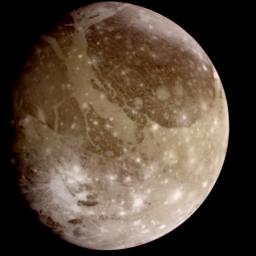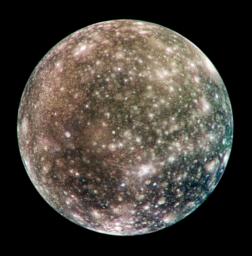Observations and the Solar System : Lecture 7
The Gas Planets
Moving out in the Solar system we encounter 4 large planets - these are
Jupiter, Saturn, Uranus, Neptune
These four planets are very different from the four planets we have seen
previously. The four terrestrial planets are rocky with a density of
around 5000 kg/m3
( see the
planet data sheet ) These four planets are much less dense with
densities
between 600 and 1300 kg/m3 (recall that water is
1000 kg/m3).
These four planets are actually composed of very dense gases. The gases
include large amounts of
hydrogen and helium. The gases are at very high pressure also
(it take a lot of pressure to make gases as dense as water!!).
The four planets are often called the Jovian planets.
The gas giants were explored by
Voyager I+II
which passed by these planets and gained much information.
Jupiter
Jupiter is, quite simply, enormous. It has 317 times the mass of earth
and around 71% of the mass in the solar system outside the sun
lies in Jupiter.
It does not have a surface as such but instead we speak of "clouds-top"
where the
atmosphere begins. If one were to pass through the clouds we would
progressively
be subjected to higher and higher pressures until we reached the centre.
Jupiters atmosphere is very different from the terrestrial planets. It is
86% hydrogen and 14% Helium. Its atmosphere is very turbulant-stormy-
and some of the features are very long-lived. The most prominent -the
"red spot" - is 3 times larger than the earth and has persisted since
the 1600s.
Jupiter is spinning very quickly - despite its enormouse size it
rotates much faster than the earth. Its rotation period at the equator
is 9hrs 50 minutes. Unlike the terrestrial planets which are rigid,
since jupiter is a gas object there are several effects. Firsty it does
not all rotate at the same speed. The poles rotate slightly slower
with a rotation period of 9hrs 55 minutes. This is called
Differential Rotation . Secondly
becaus of the rotation is is not a perfect sphere but is rather
squashed.
This is known as being oblate . Jupiters diameter at the equator
is 11.2 earth diameters but the distance "pole-to-pole" is only 10.4
earth diameters. Jupiter has an oblateness of about 6.5% - it can be
noticed by the
sharp-eyed observer.
some pictures of Jupiter
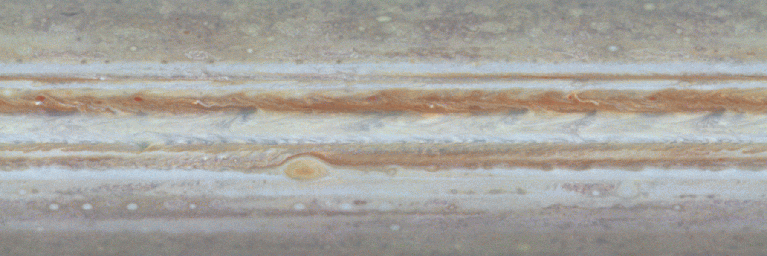
The four moons of Jupiter
Jupiter has four large moons which are easily seen with a telescope.
These were first observed by Galileo and are known as the Galilean Moons
or Satelites. They are large are rather diverse. In order, closest first
they are
Io, Europa, Ganymede, Callisto

The Jupiter system is much like a mini solar system. The speculations
that life might exist on these other worlds led to the execution of the
former priest Giordano Bruno in 1600.
We looked at some characteristics. Europa in particular is peculular.
It has a smooth surface and covered with crack-like features (but no
craters). It is thought that this is an ice covering. Underneath the
surface there could be water and perhaps even life.....
Io the nearest moon is covered in very active volcanoes. It is
thought that the tidal effects of Jupiters gravity squeeze Io
periodically thus heating it up - like a squash ball.
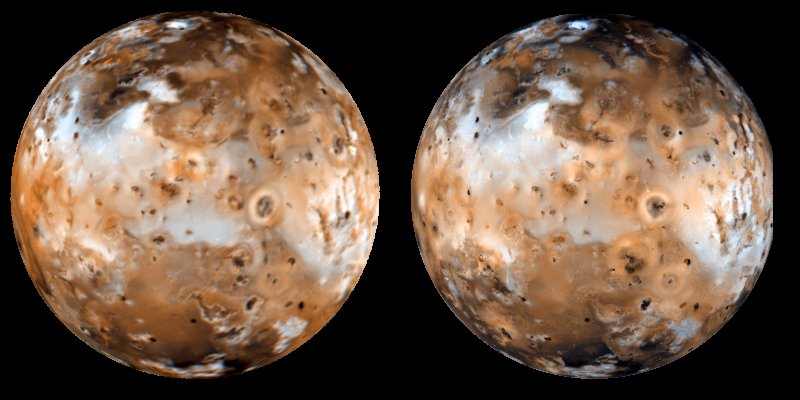
|
Io
Close ups of Io's surface
reveal an extremely volcanically active surface.
We also have a couple of nice images (
one
and two
) of the total surface and a close up of a
volcano
and a good side view of a
active volcano
|
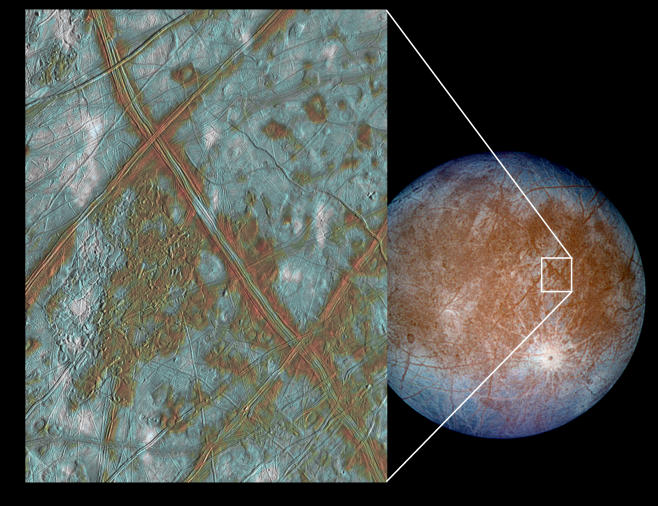
|
Europa
Close ups of Europa's surface reveal a ``cracked'' surface which could well be
the frozen surface of liquid water. This can also be seen in this
(false colour)
image
We also have a couple of nice double images (
one
and two
) of the total surface.
|
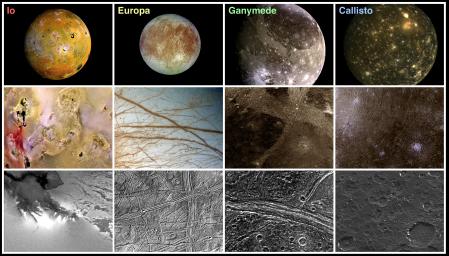
Jupiters Moons obey a Kepler-like third law.
From Newton's theory of gravitation Kepler's laws can be derived. The
general form of the third law is that is an object orbits another the
relation ship between the period and the orbits distance is
a3 = M P2
where M is the mass of the central object measured in Solar mass's
(the sun weighs 1 solar mass ).
We can use this formula to "weigh" Jupiter.
| Moon | P (days) | P (years)x 1/100 |
a (A.U) x 1/1000 |
a3/P2 x 10-5 |
| Io | 1.77 | 0.485 |
2.82 |
95.3 |
| Europa | 3.55 | 0.972 | . |
. |
| Ganymede | 7.16 | 1.96 | . |
. |
| | 16.69 | 4.57 | . |
. |
© Dave Dunbar 2020










